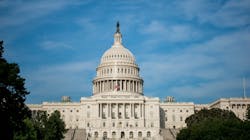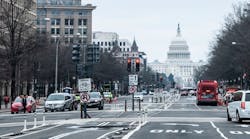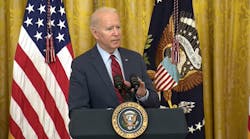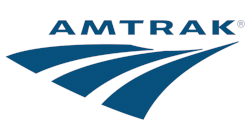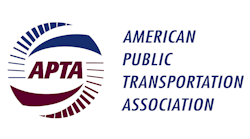What we know about Senate’s Bipartisan Infrastructure Framework and transit funding
Editor's update 8/2/21: The U.S. Senate introduced the bill the evening of Aug. 1, 2021; our report provides highlights of transit and passenger rail funding.
------
The U.S. Senate passed a procedural vote, 67-32, on July 28 to take up debate on an infrastructure package that had been agreed to hours before the vote.
According to information released by the White House, the five-year deal includes $550 billion in new federal spending to be paid for “through a combination of redirecting unspent emergency relief funds, targeted corporate user fees, strengthening tax enforcement when it comes to crypto currencies and other bipartisan measures, in addition to the revenue generated from higher economic growth.”
“This bipartisan deal is the most important investment in public transit in American history and the most important investment in rail since the creation of Amtrak 50 years ago. It will deliver high speed internet to every American,” said President Joe Biden. “And, we’re going to do it without raising taxes by one cent on people making less than $400,000 a year—no gas tax increase and no fee on electric vehicles.”
It’s important to note, this is an agreement that lays out a framework for legislation, but no legislative text has been finalized.
The framework calls for $39 billion in new investment, which is $10 billion less than the June agreement between the White House and a bipartisan group of Senators and $70 billion less than the $109 billion included in the INVEST in America Act that passed the House in early July.
The White House said the framework includes the largest federal investment in public transit in history.
“It will repair and upgrade aging infrastructure, modernize bus and rail fleets, make stations accessible to all users and bring transit service to new communities,” the White House included in its fact sheet on the deal.
The deal also includes $2.5 billion for zero-emission buses and $2.5 billion for low emission buses with the White House framing these investments for school buses. Additionally, there would be $2.5 billion for ferries.
On the passenger rail side of the deal, the framework calls for $66 billion to “eliminate the Amtrak maintenance backlog, modernize the Northeast Corridor and bring world-class rail service to areas outside the northeast and mid-Atlantic.” This amount is the same as that included in the June deal. Of the $66 billion, $22 billion would be grants for Amtrak, $24 billion for the Northeast Corridor, $12 billion for intercity rail service (including high-speed rail), $5 billion for rail improvements and safety grants and $3 billion for grade crossing improvements.
In reaction to the bipartisan announcement, the American Public Transportation Association President and CEO Paul P. Skoutelas said, “While we are greatly appreciative of the efforts of the White House and the group of Senate negotiators, we need to address the needs of the transit industry in the context of the imperatives of a 21st Century America. Our nation needs bold investments in public transit to advance equity issues, tackle climate change and forge a new transportation direction which will serve our growing communities, build economic competitiveness and position America as the world leader in sustainable mobility.”
Skoutelas said the association is ready to continue working with Congress and the administration on efforts to modernize transit and passenger rail “to meet the growing and evolving mobility demands of our cities and communities.”
Amtrak issued a statement praising the deal for “putting forward this historic level of investment” in passenger rail.
“If enacted, Amtrak will work to put these funds to use, rebuilding core infrastructure, replacing equipment and, with the [Federal Railroad Administration] and state partners, bringing more Amtrak service to more people across the nation, creating thousands of new jobs and reducing America’s carbon footprint. While this funding is a fantastic start, we call on Congress to also ensure that Amtrak gets the on-time performance and preference from our host railroads that the law requires so we can achieve the growth in reliable service that our nation needs,” said the railroad.

Mischa Wanek-Libman | Group Editorial Director
Mischa Wanek-Libman is director of communications with Transdev North America. She has more than 20 years of experience working in the transportation industry covering construction projects, engineering challenges, transit and rail operations and best practices.
Wanek-Libman has held top editorial positions at freight rail and public transportation business-to-business publications including as editor-in-chief and editorial director of Mass Transit from 2018-2024. She has been recognized for editorial excellence through her individual work, as well as for collaborative content.
She is an active member of the American Public Transportation Association's Marketing and Communications Committee and served 14 years as a Board Observer on the National Railroad Construction and Maintenance Association (NRC) Board of Directors.
She is a graduate of Drake University in Des Moines, Iowa, where she earned a Bachelor of Arts degree in Journalism and Mass Communication.
